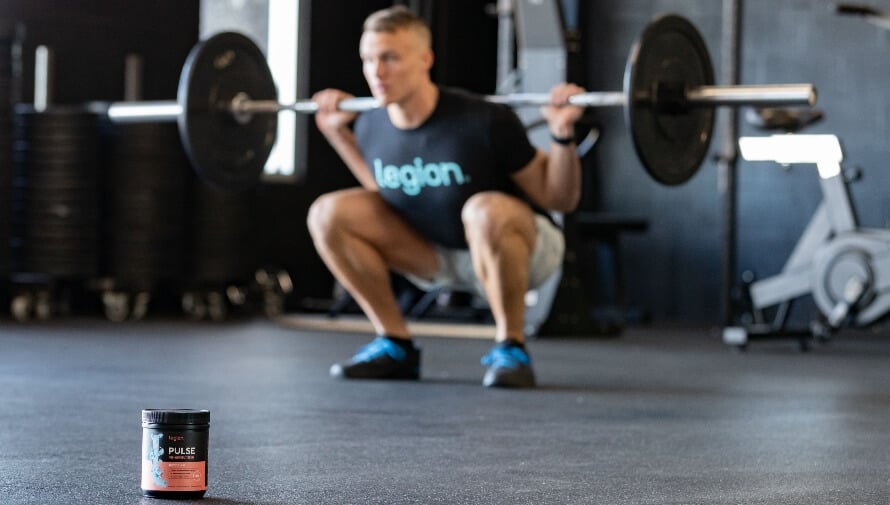
The absolute best pre-workout of all time is 8 hours of good sleep.
But if you can’t manage that, a pre-workout supplement can definitely help you feel more energized, focused, and ready to train.
The problem is, picking a pre-workout is like choosing a political candidate. There are endless options, they all make bold promises, and no matter how good the pitch, you’re always a little skeptical of whether they can deliver.
And you should be.
Supplement companies are regularly exposed for shenanigans like spiking their formulas with potentially dangerous compounds, underdosing key ingredients, and using substances that have no scientific backing.
So how do you know what to look for in a pre-workout supplement?
How do you decide which to avoid?
And how do you choose the best one for you?
Get evidence-based answers to these questions and more in this guide.
Key Takeaways
- The first thing to look for in a pre-workout is proven ingredients, like caffeine, L-theanine, citrulline malate, beta-alanine, alpha-GPC, and betaine.
- Avoid supplements with proprietary blends, underdosed or unsupported ingredients, fillers, dyes, or unnecessary ingredients like vitamins and minerals.
- While many pre-workouts contain creatine, it’s not clear whether pairing it with caffeine is a good idea. To ensure they don’t interfere with each other’s effects, it’s safer to take creatine separately from pre-workout.
- Only trust brands that publish third-party lab results, so you know the product only contains what’s on the label.
- For a pre-workout containing proven ingredients in effective doses, no unnecessary junk, and that’s verified by independent lab testing, try Pulse.
Table of Contents
+
What Ingredients to Look for in a Pre-Workout Supplement
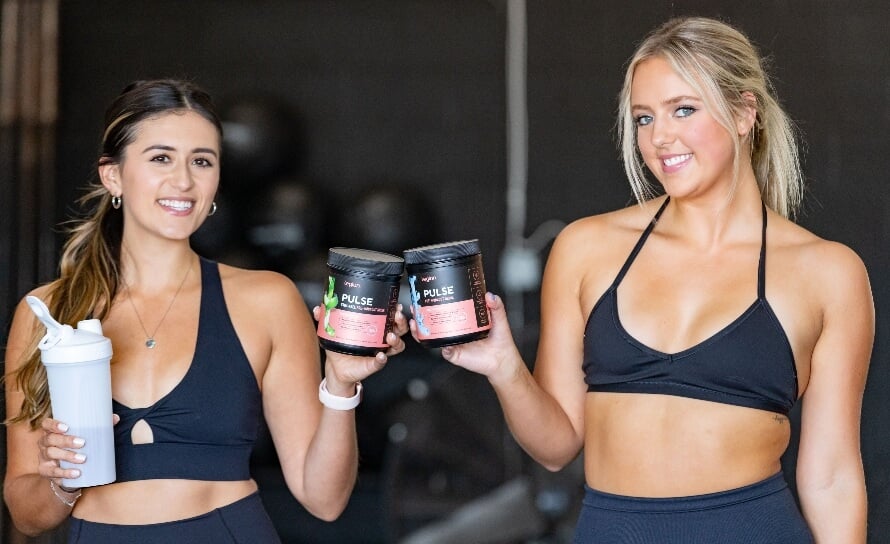
The first thing to look for in a pre-workout supplement is proven ingredients.
It doesn’t matter how pretty the label is, which #fitnessinfluencers endorse it, how many compounds it contains, or even how good it tastes—if it doesn’t have ingredients scientifically shown to improve workout performance, it’s not worth your money.
When you turn over the bottle and look at the nutrition label, here are the ingredients you want to see in your pre-workout (in order of importance):
Caffeine
Caffeine is a stimulant that increases resistance to fatigue, boosts strength and power, reduces perceived effort, and improves cognition and alertness.
Research shows that the clinically effective dose of caffeine for improving physical performance is 3–6 mg per kilogram of body weight, with 5–6 mg per kilogram generally accepted as the “optimal” dose for maximizing benefits while avoiding unwanted side effects, like dizziness, jitters, and needing to use the bathroom.
That’s about 250–500 mg of caffeine for a 180-pound man.
To maximize the benefits of caffeine on strength and endurance, you want to take it about 45–60 minutes before your workout.
L-Theanine
L-theanine is an amino acid that supports relaxation and focus by interacting with neurotransmitters like glutamate, GABA, serotonin, and dopamine to lower excitatory brain signals and boost calming ones.
That’s why research shows that supplementation with L-theanine reduces the effects of mental stress, promotes relaxation and restful sleep, and improves mood, memory performance, and attention when paired with caffeine.
The clinically effective dose of L-theanine is 100–400 mg per day. When paired with caffeine, aim for a 1:1 to 2:1 theanine-to-caffeine ratio.
It’s best to take L-theanine with caffeine around 45–60 minutes before training for maximum performance benefits.
Citrulline Malate

Citrulline malate is a compound consisting of the amino acid L-citrulline and malic acid. The body converts L-citrulline into the amino acid L-arginine, which increases the production of nitric oxide—a gas that widens blood vessels and improves circulation.
(L-citrulline accomplishes this better than supplementing directly with L-arginine, which is very hit or miss in its effectiveness.)
Research shows that supplementing with citrulline malate improves muscle endurance, relieves muscle soreness, and boosts aerobic performance.
The clinically effective dose of citrulline malate is between 4 and 10 grams taken about an hour before exercise, with most research showing doses at the higher end of this range are best.
Beta-Alanine
Beta-alanine is an amino acid that increases the amount of work muscles can do before they fatigue, improves anaerobic exercise capacity, and increases muscle endurance.
The clinically effective dose of beta-alanine is between 2.6 and 6.4 grams, with most research showing that you can get the majority of the benefits with the lower end of this range (around 3–4 grams).
You can take beta-alanine at any time during the day, because it works by accumulating in the body over time.
A common side effect of beta-alanine is a mild prickling, itching, or tingling of the skin called paresthesia, which usually occurs on the hands and face. If you experience this, don’t worry—it’s entirely harmless and often goes away over time (and just because it goes away doesn’t mean the supplement isn’t working!).
To learn more about why paresthesia happens, how long it lasts, and how to minimize it, check out this article:
What in Pre-Workout Makes You Itch?
Alpha-GPC
Alpha-GPC (or alpha-glycerylphosphorylcholine) is a compound that breaks down in the body into choline and glycerophosphate, two molecules naturally found in the brain that support its structure, function, and overall health.
Alpha-GPC crosses the blood–brain barrier, where it boosts levels of acetylcholine—a neurotransmitter essential for memory, learning, and motor control.
While Alpha-GPC mitigates cognitive decline as we age, on the performance side of things, research shows it increases power output.
The clinically effective dose of alpha-GPC is between 150 and 1,200 mg, with 250–500 mg sufficient for ergogenic and cognitive benefits, and higher doses required for reducing the symptoms of dementia.
Betaine
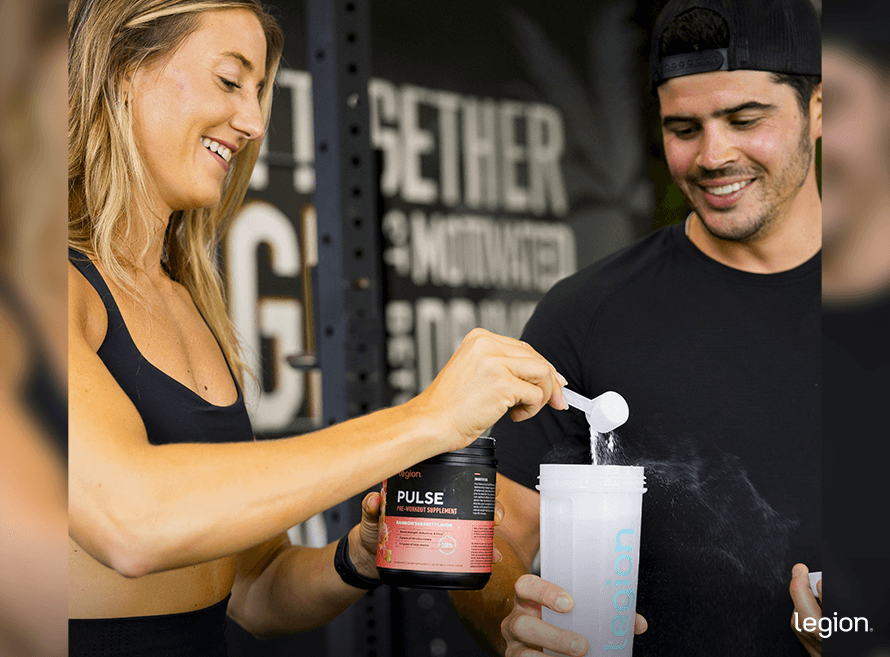
Betaine (or trimethylglycine) performs two major functions in the body: it acts as a methyl donor and as an osmolyte.
Allow me to explain . . .
Betaine has three methyl groups—small chemical units containing one carbon and three hydrogen atoms that can be “passed around” in the body to be used in essential processes like building DNA, breaking down fats, and producing energy.
It’s also an osmolyte, which means it helps balance fluid levels inside and outside cells, preventing them from shrinking or swelling too much.
These physiological functions are beneficial during times of physical stress, which is why supplementing with betaine boosts muscle endurance and increases strength.
The clinically effective dose of betaine is between 1.25 and 2.5 grams. Like beta-alanine, betaine works by building up in the body over time, so you can take it whenever you like.
Pre-Workout Ingredients to Avoid
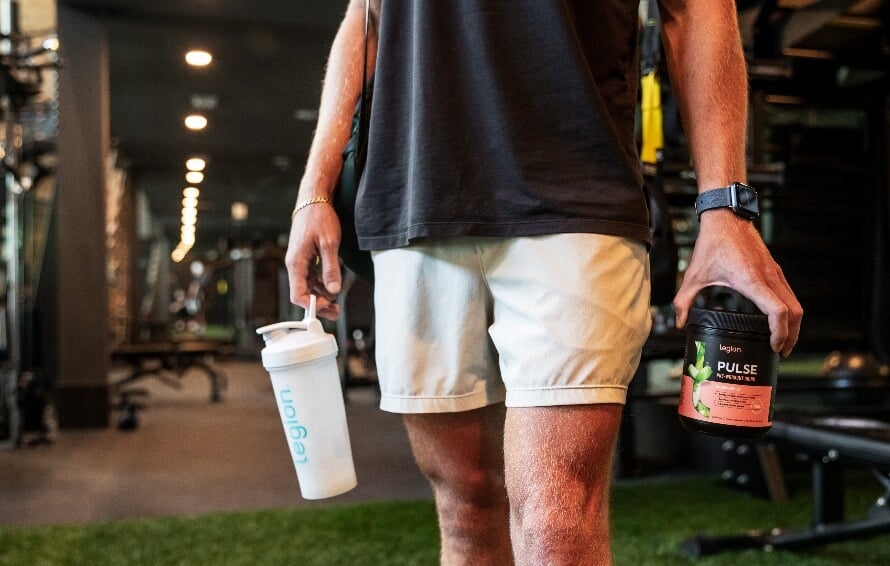
If you’ve ever looked at the ingredients label of a pre-workout supplement, you know that most contain a lot more than the six listed above.
The truth is that most of these ingredients are either scientifically unsupported or proven not to work.
Here are the ingredients you don’t want in your pre-workout supplement:
Proprietary Blends
A proprietary blend (sometimes also called a “complex” or “matrix”) is a unique mix of ingredients that a particular supplement manufacturer uses.
In the ingredients panel of a supplement containing a proprietary blend, manufacturers list the individual components of the mixture but don’t disclose how much of each ingredient they include.
They claim to do this to keep competitors from replicating their formulas. However, a more likely explanation is that manufacturers use proprietary formulations to obfuscate what their supplements contain.
Doing so allows them to underdose expensive ingredients and pad out their formulations with cheap, ineffective ones.
Underdosed Ingredients
Because proprietary blends have taken so much flak in recent years, many supplement companies now print every ingredient with its dose on their labels. On the surface this looks transparent, but it’s often not as squeaky-clean as it seems.
Disclosing how much of an ingredient a product contains doesn’t mean the dose is large enough to confer benefits. Manufacturers regularly include ingredients at a fraction of the amount proven to work by research, banking on the fact most people won’t know the difference or check.
How do you spot an effective dose?
The best way is to check the citations on the product’s webpage (which the company will provide if they’re confident in their ingredients and formulation) and compare the label dose with what the research shows is effective.
Or if that sounds like homework you’d rather skip, resources like the Legion blog and Examine break down the evidence and list effective doses for hundreds of ingredients.
Unsupported Ingredients
Many pre-workout supplements contain a long list of exotic ingredients that sound impressive but have minimal scientific support.
Often, companies claim these compounds are “science-based,” but said “science” is usually just a handful of animal or cell studies that tell us little about whether these ingredients boost strength, power, or endurance in healthy human gymgoers.
Another tactic is “cherry-picking.” This is when companies highlight the rare studies that show a compound is beneficial while ignoring the many that show it does nothing.
How can you tell if an ingredient is actually supported by science?
Look for multiple high-quality human studies or, better yet, meta-analyses. Companies with solid evidence like this typically cite it openly.
If, on the other hand, the evidence is a single small study—or worse, only animal or cell data—it probably isn’t worth your money.
Artificial Sweeteners, Flavors, and Dyes
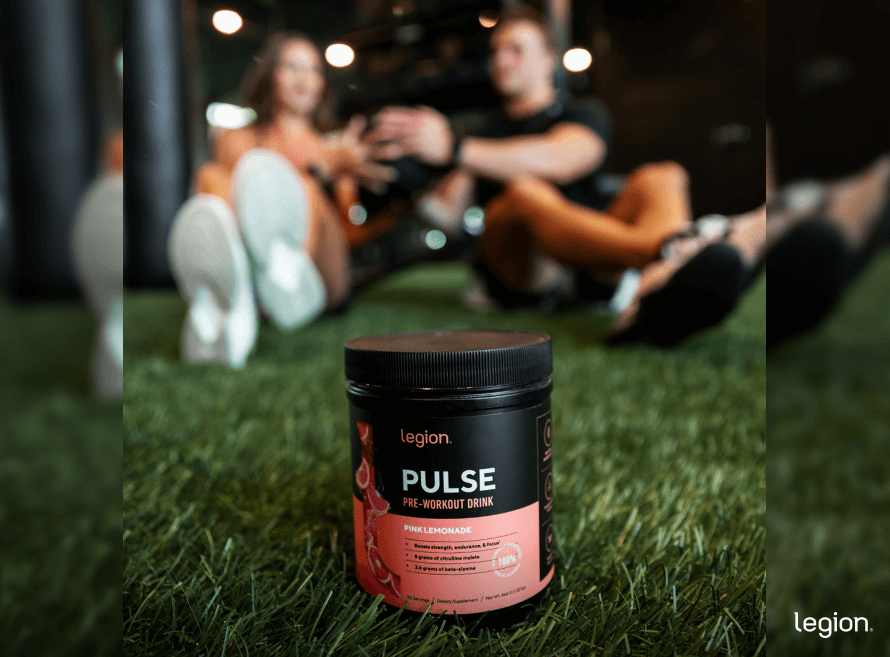
While artificial sweeteners may not be as dangerous as some people claim, studies suggest that consuming them regularly may harm your health. Thus, it’s a good idea to consume them in moderation or, if possible, not at all.
Luckily, natural sweeteners like stevia are perfectly good alternatives that may even confer health benefits.
As with artificial sweeteners, artificial food dyes aren’t a hazard per se, but studies show they can cause negative effects in some people, including gastrointestinal toxicity and behavioral disorders.
And while most research shows artificial flavors aren’t harmful, they aren’t necessary. Natural flavors taste equally good.
Fillers
Fillers are ingredients that manufacturers add to pre-workout powders to improve texture, extend shelf life, and bulk up the product. They don’t, however, boost your performance in any way.
They’re not usually harmful, but they’re also completely unnecessary. At best they add chemicals you don’t need, and at worst they can cause stomach upset.
They’re especially problematic in proprietary blends because they allow manufacturers to pad out their product with inactive ingredients instead of with compounds that actually help you perform better.
In other words, manufacturers use fillers to prioritize profit and appearance over quality, which is why it’s best to avoid them.
Vitamins and Minerals
Vitamins and minerals in pre-workouts are usually more about marketing than performance. They make the label look comprehensive and “healthy,” but they don’t provide any immediate boost to energy, strength, or endurance, especially if you already eat a healthy, balanced diet.
Basically, they’re just “window dressing.” They help a pre-workout look like an “all-in-one” health product, but usually they’re only included to distract consumers from the underwhelming doses of ingredients that actually matter for performance.
What About Pre-Workout with Creatine?
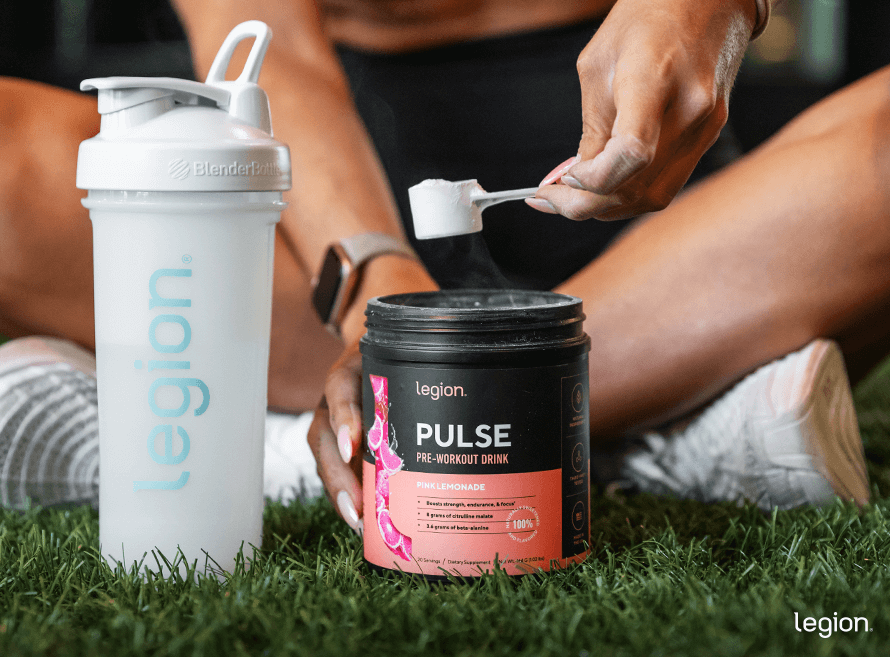
Now, you may be wondering—what about creatine? Isn’t it something to look for in pre-workout?
Many people think so, but the reality is actually more nuanced.
The issue is whether it’s a good idea to combine creatine and caffeine. Some evidence suggests taking them together is fine, but other studies show it may blunt creatine’s benefits and possibly muscle growth.
Without getting into the weeds, here’s what you need to know:
Taking a pre-workout containing creatine and caffeine is probably fine. That is, one likely won’t “cancel out” the other, provided the doses aren’t excessive (no more than ~350 mg caffeine and ~5 g creatine).
Having said that, there’s no benefit to taking creatine immediately before you train. Unlike caffeine, it doesn’t provide an instant performance boost—it works by building up in your muscles over time.
With that in mind, the simplest and safest approach is to take them separately. That way, you maximize the benefits of both supplements without any potential interference.
For a deeper look at the science behind mixing creatine and pre-workout, check out this guide:
Can You Mix Creatine With Pre-Workout for Better Gains?
What About Third-Party Testing?
Third-party testing is when an independent lab verifies that a supplement contains exactly what the label claims.
It matters because supplement companies are routinely caught cutting corners—spiking products with potentially dangerous compounds, underdosing key ingredients, or listing compounds that aren’t actually in the product.
They get away with this skullduggery because no governing body checks products before they hit the market. Instead, manufacturers are essentially on the honor system to keep labels accurate and products safe.
But in an industry where profit is usually king and honesty often an afterthought, third-party testing has become a safeguard for consumers.
It helps savvy shoppers ensure a product contains the listed ingredients at the stated doses, and no risky contaminants or banned substances that could harm your health or get you disqualified from competition.
That said, some shady companies have been caught using “third-party tested” on their marketing without proof. So to be absolutely sure a product is trustworthy, look for two things: a certification seal from a reputable lab printed on the label, and access to the lab’s results.
That way you know the testing happened and the product passed.
At Legion, every batch of Pulse is tested for purity and accuracy and independently certified by Labdoor™ to meet or exceed FDA and WADA safety guidelines. And you can see the results for yourself on Labdoor’s website.
The Bottom Line on What to Look for in Pre-Workout
The most important thing to look for in a pre-workout is whether or not it contains the most science-backed ingredients at effective doses. Specifically, look out for these:
- Caffeine: 3–6 mg per kg of body weight
- L-theanine: 100–400 mg, or a 1:1 to 2:1 theanine-to-caffeine ratio
- Citrulline Malate: 4–10 g (higher doses are generally more effective)
- Beta-alanine: 2.6–6.4 g, with most benefits at 3–4 g
- Alpha-GPC: Between 150 and 1,200 mg, with 250–500 mg sufficient in pre-workout
- Betaine: 1.25–2.5 g
At the same time, avoid pre-workouts that hide behind proprietary blends, rely on underdosed or unsupported ingredients, or are padded with artificial sweeteners, flavors, dyes, fillers, or unnecessary vitamins and minerals.
And finally, only buy from brands that have their products tested by third-party labs and publish the results. It’s the only way to be sure you’re getting exactly what’s on the label—and nothing else.
FAQ #1: What makes a good pre-workout?
A good pre-workout includes science-backed ingredients at doses shown by research to deliver real benefits. It shouldn’t contain artificial ingredients like sweeteners, flavors, dyes, fillers, or unnecessary compounds that don’t improve your performance in the gym.
Finally, it should be third-party tested to ensure it contains exactly what the label claims.
FAQ #2: What should be in a pre-workout?
The most important ingredients to look for in a pre-workout are caffeine, L-theanine, citrulline malate, beta-alanine, alpha-GPC, and betaine. It’s not enough to have these on the label, though—the product also needs to contain effective doses of each and be third-party tested for purity and accuracy.
FAQ #3: What’s the best pre-workout?
The best pre-workouts contain proven ingredients in effective doses, no unnecessary junk, and are verified by independent testing.
And if you want a pre-workout that checks all these boxes, try Pulse.
Pulse is naturally sweetened and flavored and contains clinically effective doses of caffeine, L-theanine, citrulline malate, beta-alanine, alpha-GPC, and betaine. These are the six most research-backed pre-workout ingredients with more than 450 peer-reviewed studies supporting their efficacy.
Pulse also contains no added sugars, artificial sweeteners, flavors, dyes, fillers, or other unnecessary junk. And unlike most supplements on the market, every batch of Pulse is lab-tested for purity and accuracy and independently certified by Labdoor™ to meet or exceed FDA and WADA safety guidelines.
Want More Content Like This?
Check out these articles:
- How Long Does Pre-Workout Last? Science Explained
- Does Pre-Workout Cause Acne? What Science Says
- Pre-Workout vs. Energy Drink: Which Is Best for You?
- How to Choose the Best Stim-Free Pre-Workout Supplement
- Is Honey and Salt the Perfect Pre-Workout Supplement?
Scientific References +
- Astrup, A., Toubro, S., Cannon, S., Hein, P., Breum, L., & Madsen, J. (1990). Caffeine: A double-blind, placebo-controlled study of its thermogenic, metabolic, and cardiovascular effects in healthy volunteers. American Journal of Clinical Nutrition, 51(5), 759–767. https://doi.org/10.1093/ajcn/51.5.759
- Warren, G. L., Park, N. D., Maresca, R. D., McKibans, K. I., & Millard-Stafford, M. L. (2010). Effect of caffeine ingestion on muscular strength and endurance: A meta-analysis. Medicine and Science in Sports and Exercise, 42(7), 1375–1387. https://doi.org/10.1249/MSS.0b013e3181cabbd8
- Jacobson, B. H., Weber, M. D., Claypool, L., & Hunt, L. E. (1992). Effect of caffeine on maximal strength and power in élite male athletes. British Journal of Sports Medicine, 26(4), 276–280. https://doi.org/10.1136/bjsm.26.4.276
- Beck, T. W., Housh, T. J., Schmidt, R. J., Johnson, G. O., Housh, D. J., Coburn, J. W., & Malek, M. H. (2006). The acute effects of a caffeine-containing supplement on strength, muscular endurance, and anaerobic capabilities. Journal of Strength and Conditioning Research, 20(3), 506–510. https://doi.org/10.1519/18285.1
- Richardson, D. L., & Clarke, N. D. (2016). Effect of coffee and caffeine ingestion on resistance exercise performance. Journal of Strength and Conditioning Research, 30(10), 2892–2900. https://doi.org/10.1519/JSC.0000000000001382
- Doherty, M., & Smith, P. M. (2005). Effects of caffeine ingestion on rating of perceived exertion during and after exercise: A meta-analysis. In Scandinavian Journal of Medicine and Science in Sports (Vol. 15, Issue 2, pp. 69–78). Scand J Med Sci Sports. https://doi.org/10.1111/j.1600-0838.2005.00445.x
- Nehlig, A. (2010). Is caffeine a cognitive enhancer? Journal of Alzheimer’s Disease, 20(SUPPL.1). https://doi.org/10.3233/JAD-2010-091315
- Ganio, M. S., Klau, J. F., Casa, D. J., Armstrong, L. E., & Maresh, C. M. (2009). Effect of caffeine on sport-specific endurance performance: A systematic review. In Journal of Strength and Conditioning Research (Vol. 23, Issue 1, pp. 315–324). J Strength Cond Res. https://doi.org/10.1519/JSC.0b013e31818b979a
- Del Coso, J., Salinero, J. J., González-Millán, C., Abián-Vicén, J., & Pérez-González, B. (2012). Dose response effects of a caffeine-containing energy drink on muscle performance: A repeated measures design. Journal of the International Society of Sports Nutrition, 9(1). https://doi.org/10.1186/1550-2783-9-21
- Astorino, T. A., Terzi, M. N., Roberson, D. W., & Burnett, T. R. (2010). Effect of two doses of caffeine on muscular function during isokinetic exercise. Medicine and Science in Sports and Exercise, 42(12), 2205–2210. https://doi.org/10.1249/MSS.0b013e3181e3a11d
- Kimura, K., Ozeki, M., Juneja, L. R., & Ohira, H. (2007). l-Theanine reduces psychological and physiological stress responses. Biological Psychology, 74(1), 39–45. https://doi.org/10.1016/j.biopsycho.2006.06.006
- Rao, Theertham P., et al. “In Search of a Safe Natural Sleep Aid.” Journal of the American College of Nutrition, vol. 34, no. 5, 11 Mar. 2015, pp. 436–447, https://doi.org/10.1080/07315724.2014.926153.
- Bulman, Amanda, et al. “The Effects of L-Theanine Consumption on Sleep Outcomes: A Systematic Review and Meta-Analysis.” Sleep Medicine Reviews, vol. 81, 25 Feb. 2025, p. 102076, www.sciencedirect.com/science/article/pii/S1087079225000292?utm_source=chatgpt.com, https://doi.org/10.1016/j.smrv.2025.102076.
- Bryan, J. (2008). Psychological effects of dietary components of tea: Caffeine and L-theanine. In Nutrition Reviews (Vol. 66, Issue 2, pp. 82–90). Nutr Rev. https://doi.org/10.1111/j.1753-4887.2007.00011.x
- Einöther, S. J. L., Martens, V. E. G., Rycroft, J. A., & De Bruin, E. A. (2010). l-Theanine and caffeine improve task switching but not intersensory attention or subjective alertness. Appetite, 54(2), 406–409. https://doi.org/10.1016/j.appet.2010.01.003
- Gomez-Ramirez, M., Kelly, S. P., Montesi, J. L., & Foxe, J. J. (2009). The effects of l-theanine on alpha-band oscillatory brain activity during a visuo-spatial attention task. Brain Topography, 22(1), 44–51. https://doi.org/10.1007/s10548-008-0068-z
- Förstermann, U., & Sessa, W. C. (2012). Nitric oxide synthases: Regulation and function. In European Heart Journal (Vol. 33, Issue 7). Eur Heart J. https://doi.org/10.1093/eurheartj/ehr304
- Zhao, Y., Vanhoutte, P. M., & Leung, S. W. S. (2015). Vascular nitric oxide: Beyond eNOS. In Journal of Pharmacological Sciences (Vol. 129, Issue 2, pp. 83–94). Japanese Pharmacological Society. https://doi.org/10.1016/j.jphs.2015.09.002
- Curis, Emmanuel, et al. “Citrulline and the Gut.” Current Opinion in Clinical Nutrition and Metabolic Care, vol. 10, no. 5, Sept. 2007, pp. 620–626, https://doi.org/10.1097/mco.0b013e32829fb38d. Accessed 11 Dec. 2020.
- Pérez-Guisado, Joaquín, and Philip M Jakeman. “Citrulline Malate Enhances Athletic Anaerobic Performance and Relieves Muscle Soreness.” Journal of Strength and Conditioning Research, vol. 24, no. 5, 2010, pp. 1215–22, www.ncbi.nlm.nih.gov/pubmed/20386132, https://doi.org/10.1519/JSC.0b013e3181cb28e0.
- Glenn, J. M., Gray, M., Wethington, L. N., Stone, M. S., Stewart, R. W., & Moyen, N. E. (2017). Acute citrulline malate supplementation improves upper- and lower-body submaximal weightlifting exercise performance in resistance-trained females. European Journal of Nutrition, 56(2), 775–784. https://doi.org/10.1007/s00394-015-1124-6
- Glenn, J. M., Gray, M., Jensen, A., Stone, M. S., & Vincenzo, J. L. (2016). Acute citrulline-malate supplementation improves maximal strength and anaerobic power in female, masters athletes tennis players. European Journal of Sport Science, 16(8), 1095–1103. https://doi.org/10.1080/17461391.2016.1158321
- Bendahan, D. “Citrulline/Malate Promotes Aerobic Energy Production in Human Exercising Muscle.” British Journal of Sports Medicine, vol. 36, no. 4, 1 Aug. 2002, pp. 282–289, https://doi.org/10.1136/bjsm.36.4.282.
- Suzuki, T., Morita, M., Kobayashi, Y., & Kamimura, A. (2016). Oral L-citrulline supplementation enhances cycling time trial performance in healthy trained men: Double-blind randomized placebo-controlled 2-way crossover study. Journal of the International Society of Sports Nutrition, 13(1). https://doi.org/10.1186/s12970-016-0117-z
- Ament, W., & Verkerke, G. (2009). Exercise and fatigue. In Sports Medicine (Vol. 39, Issue 5, pp. 389–422). Sports Med. https://doi.org/10.2165/00007256-200939050-00005
- Hill, C. A., Harris, R. C., Kim, H. J., Harris, B. D., Sale, C., Boobis, L. H., Kim, C. K., & Wise, J. A. (2007). Influence of β-alanine supplementation on skeletal muscle carnosine concentrations and high intensity cycling capacity. Amino Acids, 32(2), 225–233. https://doi.org/10.1007/s00726-006-0364-4
- Sale, C., Saunders, B., Hudson, S., Wise, J. A., Harris, R. C., & Sunderland, C. D. (2011). Effect of β-alanine plus sodium bicarbonate on high-intensity cycling capacity. Medicine and Science in Sports and Exercise, 43(10), 1972–1978. https://doi.org/10.1249/MSS.0b013e3182188501
- Smith, A. E., Walter, A. A., Graef, J. L., Kendall, K. L., Moon, J. R., Lockwood, C. M., Fukuda, D. H., Beck, T. W., Cramer, J. T., & Stout, J. R. (2009). Effects of β-alanine supplementation and high-intensity interval training on endurance performance and body composition in men; a double-blind trial. Journal of the International Society of Sports Nutrition, 6. https://doi.org/10.1186/1550-2783-6-5
- Kern, B. D., & Robinson, T. L. (2011). Effects of β-alanine supplementation on performance and body composition in collegiate wrestlers and football players. Journal of Strength and Conditioning Research, 25(7), 1804–1815. https://doi.org/10.1519/JSC.0b013e3181e741cf
- Culbertson, Julie Y., et al. “Effects of Beta-Alanine on Muscle Carnosine and Exercise Performance: A Review of the Current Literature.” Nutrients, vol. 2, no. 1, 25 Jan. 2010, pp. 75–98, www.ncbi.nlm.nih.gov/pmc/articles/PMC3257613/, https://doi.org/10.3390/nu2010075.
- Hobson, R. M., Saunders, B., Ball, G., Harris, R. C., & Sale, C. (2012). Effects of β-alanine supplementation on exercise performance: A meta-analysis. In Amino Acids (Vol. 43, Issue 1, pp. 25–37). Amino Acids. https://doi.org/10.1007/s00726-011-1200-z
- Moreno Moreno, M. D. J. (2003). Cognitive improvement in mild to moderate Alzheimer’s dementia after treatment with the acetylcholine precursor choline alfoscerate: A multicenter, double-blind, randomized, placebo-controlled trial. Clinical Therapeutics, 25(1), 178–193. https://doi.org/10.1016/S0149-2918(03)90023-3
- Kerksick, Chad M. “Acute Alpha-Glycerylphosphorylcholine Supplementation Enhances Cognitive Performance in Healthy Men.” Nutrients, vol. 16, no. 23, 9 Dec. 2024, pp. 4240–4240, www.mdpi.com/2072-6643/16/23/4240, https://doi.org/10.3390/nu16234240. Accessed 11 Dec. 2024.
- Ziegenfuss, T., Landis, J., & Hofheins, J. (2008). Acute supplementation with alpha-glycerylphosphorylcholine augments growth hormone response to, and peak force production during, resistance exercise. Journal of the International Society of Sports Nutrition, 5(S1), P15. https://doi.org/10.1186/1550-2783-5-s1-p15
- Harrington, R. “Effects of Branched Chain Amino Acids, L-Citrulline, and Alpha-Glycerylphosphorylcholine Supplementation on Exercise Performance in Trained Cyclists: A Randomized Crossover Trial.” Journal of the International Society of Sports Nutrition, vol. 20, no. 1, 25 May 2023, https://doi.org/10.1080/15502783.2023.2214112. Accessed 31 Aug. 2023.
- Bellar, David, et al. “The Effect of 6 Days of Alpha Glycerylphosphorylcholine on Isometric Strength.” Journal of the International Society of Sports Nutrition, vol. 12, no. 42, 17 Nov. 2015, www.ncbi.nlm.nih.gov/pmc/articles/PMC4650143/, https://doi.org/10.1186/s12970-015-0103-x.
- Marcus, Lena, et al. “Evaluation of the Effects of Two Doses of Alpha Glycerylphosphorylcholine on Physical and Psychomotor Performance.” Journal of the International Society of Sports Nutrition, vol. 14, no. 1, 5 Oct. 2017, https://doi.org/10.1186/s12970-017-0196-5. Accessed 27 Sept. 2021.
- Trepanowski, John F, et al. “The Effects of Chronic Betaine Supplementation on Exercise Performance, Skeletal Muscle Oxygen Saturation and Associated Biochemical Parameters in Resistance Trained Men.” Journal of Strength and Conditioning Research, vol. 25, no. 12, Dec. 2011, pp. 3461–3471, https://doi.org/10.1519/jsc.0b013e318217d48d. Accessed 26 June 2020.
- Lee, Elaine C, et al. “Ergogenic Effects of Betaine Supplementation on Strength and Power Performance.” Journal of the International Society of Sports Nutrition, vol. 7, no. 1, 2010, p. 27, https://doi.org/10.1186/1550-2783-7-27. Accessed 9 July 2020.
- Lee, E. C., Maresh, C. M., Kraemer, W. J., Yamamoto, L. M., Hatfield, D. L., Bailey, B. L., Armstrong, L. E., Volek, J. S., McDermott, B. P., & Craig, S. A. S. (2010). Ergogenic effects of betaine supplementation on strength and power performance. Journal of the International Society of Sports Nutrition, 7, 27. https://doi.org/10.1186/1550-2783-7-27
- Abou-Donia, Mohamed B, et al. “Splenda Alters Gut Microflora and Increases Intestinal P-Glycoprotein and Cytochrome P-450 in Male Rats.” Journal of Toxicology and Environmental Health. Part A, vol. 71, no. 21, 2008, pp. 1415–29, www.ncbi.nlm.nih.gov/pubmed/18800291, https://doi.org/10.1080/15287390802328630.
- Qin, Xiaofa. “What Made Canada Become a Country with the Highest Incidence of Inflammatory Bowel Disease: Could Sucralose Be the Culprit?” Canadian Journal of Gastroenterology, vol. 25, no. 9, 2011, pp. 511–511, https://doi.org/10.1155/2011/451036. Accessed 8 Dec. 2020.
- Schernhammer, Eva S, et al. “Consumption of Artificial Sweetener– and Sugar-Containing Soda and Risk of Lymphoma and Leukemia in Men and Women.” The American Journal of Clinical Nutrition, vol. 96, no. 6, 24 Oct. 2012, pp. 1419–1428, academic.oup.com/ajcn/article/96/6/1419/4571485, https://doi.org/10.3945/ajcn.111.030833. Accessed 28 Oct. 2019.
- Sp, Fowler, et al. “Fueling the Obesity Epidemic? Artificially Sweetened Beverage Use and Long-Term Weight Gain.” Obesity (Silver Spring, Md.), 1 Aug. 2008, pubmed.ncbi.nlm.nih.gov/18535548/.
- Ozbayer, Cansu, et al. “Effects of Stevia Rebaudiana (Bertoni) Extract and N-Nitro-L-Arginine on Renal Function and Ultrastructure of Kidney Cells in Experimental Type 2 Diabetes.” Journal of Medicinal Food, vol. 14, no. 10, Oct. 2011, pp. 1215–22, pubmed.ncbi.nlm.nih.gov/21663490/, https://doi.org/10.1089/jmf.2010.0280.
- Yadav, S. K., & Guleria, P. (2012). Steviol Glycosides from Stevia: Biosynthesis Pathway Review and their Application in Foods and Medicine. Critical Reviews in Food Science and Nutrition, 52(11), 988–998. https://doi.org/10.1080/10408398.2010.519447
- Chen, Huizhong. “Toxicological Significance of Azo Dye Metabolism by Human Intestinal Microbiota.” Frontiers in Bioscience, vol. E4, no. 2, 2012, pp. 568–586, https://doi.org/10.2741/e400.
- Kanarek, Robin B. “Artificial Food Dyes and Attention Deficit Hyperactivity Disorder.” Nutrition Reviews, vol. 69, no. 7, 1 July 2011, pp. 385–391, https://doi.org/10.1111/j.1753-4887.2011.00385.x.
- Nigg, Joel T., et al. “Meta-Analysis of Attention-Deficit/Hyperactivity Disorder or Attention-Deficit/Hyperactivity Disorder Symptoms, Restriction Diet, and Synthetic Food Color Additives.” Journal of the American Academy of Child & Adolescent Psychiatry, vol. 51, no. 1, Jan. 2012, pp. 86-97.e8, www.ncbi.nlm.nih.gov/pmc/articles/PMC4321798/, https://doi.org/10.1016/j.jaac.2011.10.015.
- McCann, D., Barrett, A., Cooper, A., Crumpler, D., Dalen, L., Grimshaw, K., Kitchin, E., Lok, K., Porteous, L., Prince, E., Sonuga-Barke, E., Warner, J. O., & Stevenson, J. (2007). Food additives and hyperactive behaviour in 3-year-old and 8/9-year-old children in the community: a randomised, double-blinded, placebo-controlled trial. Lancet, 370(9598), 1560–1567. https://doi.org/10.1016/S0140-6736(07)61306-3
- Gao, Yonglin, et al. “Effect of Food Azo Dye Tartrazine on Learning and Memory Functions in Mice and Rats, and the Possible Mechanisms Involved.” Journal of Food Science, vol. 76, no. 6, Aug. 2011, pp. T125–T129, https://doi.org/10.1111/j.1750-3841.2011.02267.x. Accessed 4 Nov. 2020.
- Almutairi, Rawan, et al. “Validity of Food Additive Maltodextrin as Placebo and Effects on Human Gut Physiology: Systematic Review of Placebo-Controlled Clinical Trials.” European Journal of Nutrition, vol. 61, no. 6, 1 Mar. 2022, pubmed.ncbi.nlm.nih.gov/35230477/, https://doi.org/10.1007/s00394-022-02802-5.
- Gonzalez, Adam M., et al. “Effect of a Pre-Workout Energy Supplement on Acute Multi-Joint Resistance Exercise.” Journal of Sports Science & Medicine, vol. 10, no. 2, 2011, pp. 261–266, pubmed.ncbi.nlm.nih.gov/24149870/.
- Kendall, Kristina L., et al. “Ingesting a Preworkout Supplement Containing Caffeine, Creatine, β-Alanine, Amino Acids, and B Vitamins for 28 Days Is Both Safe and Efficacious in Recreationally Active Men.” Nutrition Research, vol. 34, no. 5, 1 May 2014, pp. 442–449, www.sciencedirect.com/science/article/pii/S027153171400058X?casa_token=OgKhq3l5fU8AAAAA:UR3AH43dtNPXYY3sLKOmi2zI32GfNCCaDdnVKNoz_2XxbY9rRF3Ib-TltxO3IuEx7yzN4EJV, https://doi.org/10.1016/j.nutres.2014.04.003.
- Ormsbee, Michael J, et al. “The Effects of Six Weeks of Supplementation with Multi-Ingredient Performance Supplements and Resistance Training on Anabolic Hormones, Body Composition, Strength, and Power in Resistance-Trained Men.” Journal of the International Society of Sports Nutrition, vol. 9, no. 1, 15 Nov. 2012, https://doi.org/10.1186/1550-2783-9-49.
- Vandenberghe, K., et al. “Caffeine Counteracts the Ergogenic Action of Muscle Creatine Loading.” Journal of Applied Physiology, vol. 80, no. 2, 1 Feb. 1996, pp. 452–457, https://doi.org/10.1152/jappl.1996.80.2.452.
- Trexler, Eric T., et al. “Effects of Coffee and Caffeine Anhydrous Intake during Creatine Loading.” Journal of Strength and Conditioning Research, vol. 30, no. 5, May 2016, pp. 1438–1446, https://doi.org/10.1519/jsc.0000000000001223.
- Hespel, P., et al. “Opposite Actions of Caffeine and Creatine on Muscle Relaxation Time in Humans.” Journal of Applied Physiology, vol. 92, no. 2, 1 Feb. 2002, pp. 513–518, https://doi.org/10.1152/japplphysiol.00255.2001.
- Pakulak, Avery, et al. “Effects of Creatine and Caffeine Supplementation during Resistance Training on Body Composition, Strength, Endurance, Rating of Perceived Exertion and Fatigue in Trained Young Adults.” Journal of Dietary Supplements, vol. 19, no. 5, 24 Mar. 2021, pp. 1–16, https://doi.org/10.1080/19390211.2021.1904085.
- Candow, Darren G., et al. “Creatine O’Clock: Does Timing of Ingestion Really Influence Muscle Mass and Performance?” Frontiers in Sports and Active Living, vol. 4, 20 May 2022, https://doi.org/10.3389/fspor.2022.893714. Accessed 10 Nov. 2022.
- Cohen, P. A., Avula, B., Venhuis, B., Travis, J. C., Wang, Y. H., & Khan, I. A. (2017). Pharmaceutical doses of the banned stimulant oxilofrine found in dietary supplements sold in the USA. Drug Testing and Analysis, 9(1), 135–142. https://doi.org/10.1002/dta.1976
- Cohen, P. A., Travis, J. C., Keizers, P. H. J., Deuster, P., & Venhuis, B. J. (2018). Four experimental stimulants found in sports and weight loss supplements: 2-amino-6-methylheptane (octodrine), 1,4-dimethylamylamine (1,4-DMAA), 1,3-dimethylamylamine (1,3-DMAA) and 1,3-dimethylbutylamine (1,3-DMBA). Clinical Toxicology, 56(6), 421–426. https://doi.org/10.1080/15563650.2017.1398328










